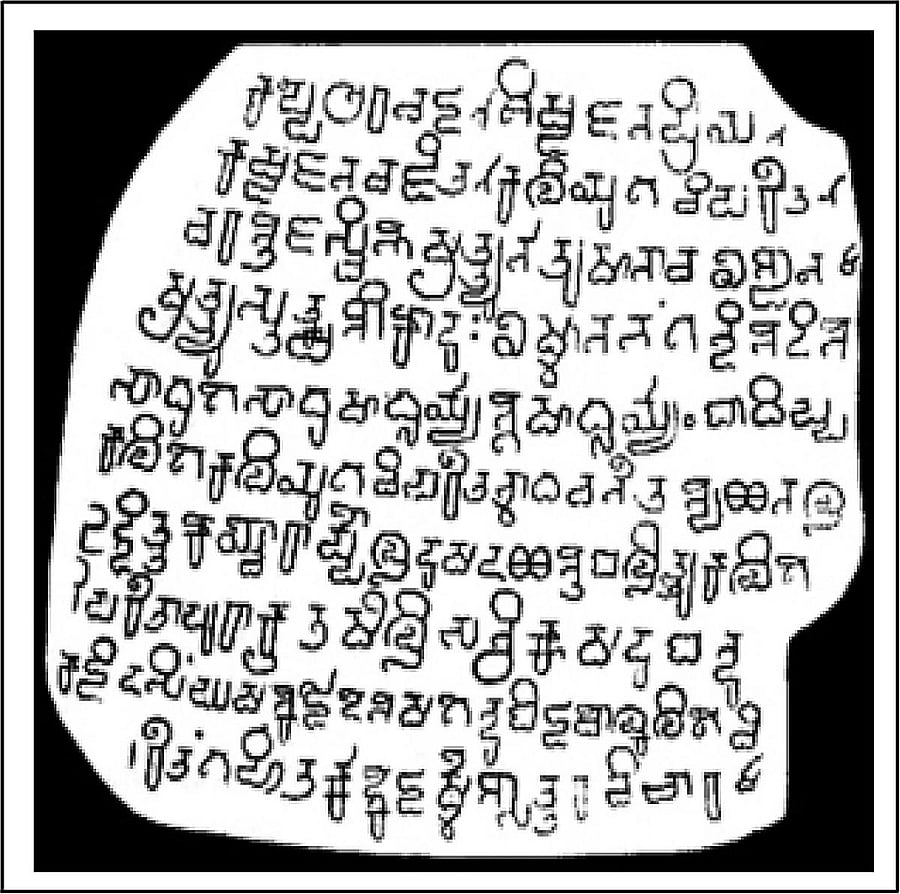
Though it is now agreed that histories are narratives that generously employ the techniques of fiction, it is difficult to imagine serious, scholarly books on ancient and medieval history finding a wide readership. However, Prof S Settar’s books in Kannada have had phenomenal success in reaching out to the Kannada public sphere. To date, 10 editions of his book on Sangam Tamilagam has been published and the second edition of Prakrit Jagadwalaya was published within ten days of the release of its first edition.
His books construct innovative historiography based on the interpretation of inscriptions in Karnataka.
Exhaustive interpretations
At a time when the number of proficient readers of ancient Kannada and inscriptions has become alarmingly small, here are books which exhaustively interpret inscriptions to nudge away deeply rooted but false notions of Karnataka’s history and the societies of yore. The arguments and conclusions demand a radical deconstruction of the existing historiography. His work Halagannada Lipi, Lipikara, Lipi Vyavasaya (Ancient Kannada Script, Scribe and Cultivation of Letters) published in 2004 begins with a disarmingly simple statement, “We have studied sculpture ignoring the sculptor and studied the script by ignoring the scribe.” The argument takes us back to his Footprints of Artisans in History address at the Indian History Congress.
Almost in line with the perspective of subaltern studies (though without subscribing to all its tenets), he attempts to explore the work, the social position and the cultural contribution of the artisans, especially the scribes who etched the inscriptions. The popular opinion among some experts is that they were mere scribes, with little education, constituting the sub-alternised groups who merely etched in stone or on metal what was composed and written by others. As a result, very little attention has been paid to these artisans. In his books, Ruvari, Prakrit Jagadwalaya, Halagannada, he patiently and systematically digs out the bits and pieces of information on artisans available and uses them to make reasonable conjectures about them. His unhurried, cumulative style gradually gives us insights which overturn stereotypical notions. Like a tireless biographer of the anonymous individuals of the past, he digs out facts from the unerasable inscriptions.
What emerges from his findings is that the artisans (sculptors, scribes, smiths) wishing to be known as Viswhakarmas were not only literate but well-read and even skilled at composing verses. Many of them held important positions in administration and were given land and other grants for the work rendered by them. These findings contradict the entrenched notion that in the Varna system, artisans who were not Brahmins did not have access to literacy and knowledge. The narrative which emerges from these findings is fascinating.
Origin of Kannada script
Mauryan king Ashoka introduced the Brahmi script to the South through his edicts in Prakrit language in Brahmi script. Over a period of nearly four to six centuries, out of Brahmi evolved the Kannada script which also became the vehicle for Sanskrit language until it was replaced by Nagari script much later. This was because the Vedic Brahmins believed in retaining their knowledge in memory and passing it down to the next generation in the oral mode instead of writing it down. In addition to this, Buddhism and Jainism evolved language policies supporting Prakrit and other local languages. While Buddhism used Pali, Jainism opted for the local language Kannada thus leading to the first literary renaissance in Kannada. This was also supported by the patronage of several ruling dynasties to the use of Kannada in the inscriptions. Gradually, the Brahmin class took to writing, renounced Prakrit and made Sanskrit their medium.
Where does all this leave the artisans? Their known history begins with the arrival of Chapada (from present-day Afghanistan), whose language was Kharosti. They were hired by Emperor Ashoka to inscribe his edicts in the south including Karnataka. With all the ups and downs of history, the artisans remained part of a highly skilled, literate, educated community respected and patronised by the rulers.
Dynamics of history
In Ruvari, Prof Settar focuses on architecture and the sculptors. In his book on ancient Kannada, he had tried to argue how the dominant theory of Sanskritisation fails to explain the dynamics of history which allowed artisans to receive land grants almost exactly in the manner in which deyas were given to the Brahmins. It was the Brahmins who took to writing centuries later compared to the artisans. In Prakrit Jagadwalaya, an entire section deals with the Buddhist contribution to architecture in providing the original names, words and concepts used in architecture as a discipline.
The distinctive architectural style also indicates changes in the structuring of the Sangha (assembly) as originally conceived by the Buddha. There was growing institutionalisation of the religion drawing support from the patronage of the wealthy merchant class. An interesting sidelight is that some of the Bhikkus themselves were involved in the work either as designers or in a supervisory capacity.
Prof Settar’s study of Prakrit terms relating to Buddhist archaeology lays the foundation for both new sociology and historiography of ancient Karnataka.
I see this as part of the process of decolonising our social sciences. The colonial production of knowledge was founded on colonial notions of the caste system as static, the Varna system as an actually existing rigid social system and of the dominant priest class which retained absolute control over literacy and knowledge. In contrast, Prof Settar’s work unsettles all such colonial frameworks without resorting to rhetoric or polemics. He practises a historian’s history.
In recognition of his contribution to Kannada Scholarship, Karnataka Government has selected him for ‘Pampa Prashasthi’ a prestigious award.
(The writer is a literary and cultural critic based in Shivamogga)
